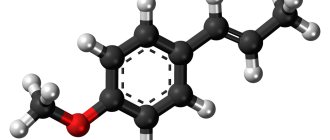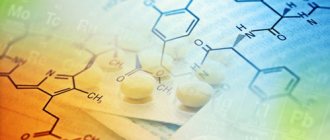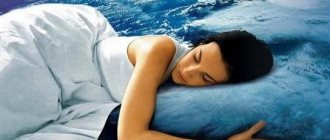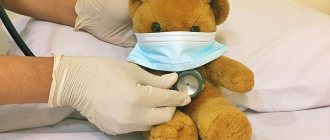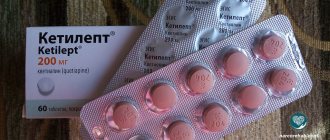Tranquilizers are classified as psychotropic drugs, since the main target of their action is the mental sphere and they are used to treat mental illnesses and painful conditions in healthy individuals. In addition to tranquilizers, psychotropic drugs include antipsychotics, antidepressants, mood stabilizers, nootropics and nervous system stimulants.
The first tranquilizer MEPROBOMAT
was synthesized in 1952. Thus, the history of the use of drugs in this group goes back more than 60 years.
Most drugs in this group, in addition to their sedative effect, have the ability to reduce muscle tension, make it easier to fall asleep, and stabilize autonomic reactions: palpitations, pressure surges, tremors, dizziness and headaches.
Tranquilizers
- a large group of drugs that are different in structure and mechanism of action, but what they have in common is a decrease in the excitability of the subcortical structures of the brain responsible for emotional reactions.
General restrictions for all drugs in this group are incompatibility with alcohol (they enhance each other’s effects), and prohibition on use by persons performing complex responsible actions that require increased concentration and instant reaction (drivers, pilots, machine operators, etc.) .
Depending on the chemical structure, tranquilizers are divided into several groups (according to M.D. Mashkovsky). List of tranquilizers by group:
BENZODIAZEPINES
One of the most common tranquilizers. They are widely used in the practice of psychiatrists, psychotherapists, psychiatrists - narcologists, neurologists, cardiologists, surgeons, anesthesiologists and resuscitators. With long-term use they can cause dependence (mental and physical). Benzodiazepine tranquilizers have a specific antagonist (a drug with the opposite effect) - FLUMAZENIL (anexate), which is used to stop breathing and loss of consciousness in cases of overdose and poisoning with benzodiazepines.
- Chlozepid (Librium, Radepur, Chlordiazepoxide, Elenium). The very first benzodiazepine tranquilizer with a strong sedative effect. Sibazon (Relanium, Relium, Seduxen, apaurin, diazepam).
- Bromodihydrochlorophenylbenzodiazepine (phenazepam, elzepam). Domestic development, widely distributed in the countries of the former USSR.
- Nozepam (tazepam, oxazepam).
- Lorazepam (calmese, loram, lorafen).
- Bromazepam (Lexilium).
- Mezapam (rudotel, medazepam).
- Gidazepam.
- Estazolam (nuctanol).
- Clorazepate (Tranxene).
- Clobazam (freesium).
- Alprazolam (Xanax, Zoldac, Neurol). One of the most powerful drugs in this group.
- Tetrazepam (myolostane).
- Tofisopam (Grandaxin). It is distinguished by its ability to have an activating effect.
What is the difference between tranquilizers and antidepressants?
Antidepressants are psychotropic drugs that stimulate the nervous system, while tranquilizers are depressants. That is, antidepressants increase emotional activity and improve mood, and tranquilizers calm.
Three groups of tranquilizers
Sedatives are divided into 3 main groups (classification of tranquilizers):
Neuroleptics
or “major” tranquilizers, are antipsychotic drugs that are used mainly for schizophrenia and other severe mental illnesses accompanied by feelings of
- anxiety,
- fear
- and motor excitement.
Anxiolytics
(from the Latin “anxietas” - anxiety, fear, and the ancient Greek “λυτικός” - weakening), or “minor” tranquilizers - now they are most often understood as tranquilizers, and neuroleptics are no longer considered as such.
Sedatives -
drugs whose action is mainly aimed at
- inhibition of the nervous system
- and improved sleep quality.
In this article, by the term “tranquilizers” we will understand only drugs from the anxiolytic group, as is customary in modern medicine.
Use of tranquilizers
The main indications for taking these drugs are mild mental disorders and behavioral disorders:
- Neuroses. Neurosis-like conditions.
- Personality disorders.
- Anxiety disorders: panic attacks, phobias, generalized anxiety disorder, mixed anxiety and depressive disorder.
- Withdrawal state (withdrawal syndrome) with alcohol, nicotine, drug addiction, substance abuse and polydrug addiction.
- Depression with anxiety.
- Schizotypal disorder.
- Acute psychoses (in combination with other drugs).
- Consequences of organic damage to the central nervous system with mental disorders
- Behavioral disorders in children and adolescents.
- Insomnia.
- Eating disorders (anorexia, bulimia).
- Psychosomatic diseases: eczema, irritable bowel syndrome, “neurogenic bladder”, asthma attacks, hypertension and arrhythmia.
In addition, they are widely used in neurological practice: consequences of traumatic brain injuries, strokes with increased muscle tone, epilepsy, spinal osteochondrosis, etc. In therapeutic practice: functional disorders in the gastrointestinal tract, cardiovascular, urinary and other body systems.
Is it possible to take tranquilizers on your own without a doctor?
No. These are psychotropic drugs that have their own contraindications and limitations. Self-administration is life-threatening.
Can you buy tranquilizers without a prescription?
No. They are prescribed only on prescription by a doctor who has grounds for prescribing this drug. Two tranquilizers are prescribed on special strict reporting prescription forms (form 148 - 1/u - 88), these are sibazon and alprazolam.
What are the most powerful tranquilizers?
Sibazon and alprazolam.
What are daytime tranquilizers?
Since most tranquilizers tend to cause daytime sleepiness, drugs have been synthesized without this side effect. These include: gidazepam, clorazepate, tofisopam, hydroxyzine, mebicar.
What is the difference between tranquilizers and antidepressants? Do they have anything in common?
The difference between them is in the mechanisms of action (they act on different types of receptors). They have different therapeutic effects (anti-anxiety and antidepressant, respectively). Tranquilizers are often prescribed once or in short courses, antidepressants are prescribed for a long time, several months.
What they have in common is that they are all psychotropic drugs. Some drugs from these groups can give a hypnotic, sedative and anti-aggressive effect.
Psychotropic drugs: a guide to fears
A couple of decades ago, the use of psychotropic medications was the exclusive prerogative of the psychiatrist. Therefore, it seems to me that there remains fear and mistrust in relation to this class of drugs. However, the trends of modern medicine are such that a neurologist, working on the principles of evidence-based medicine and adhering to international clinical guidelines, must understand psychotropic medications, as they allow the doctor to improve the patient’s quality of life, avoid endless and useless consultations with doctors and additional expensive examinations. In this article I will talk about the main types of psychotropic drugs that a neurologist can prescribe at an outpatient appointment: tranquilizers/anxiolytics, antidepressants, neuroleptics, antiepileptic drugs.
Some basics. How does our brain work? The brain is made up of many neuron cells. Neurons transmit information to each other using molecules called neurotransmitters. There are a lot of neurotransmitters: acetylcholine, histamine, serotonin, dopamine, GABA, etc. The mediator is released from the process of one neuron and “sits” on a receptor that is located on the process or body of another neuron. Some transmitters activate another neuron, some inhibit it. The mechanism of action of most psychotropic drugs is associated with the effect on receptors for certain mediators - one or several at once.
What are the fundamental differences between classes of psychotropic drugs?
1. Tranquilizers (anxiolytics, anti-anxiety drugs)
Representatives: benzodiazepines (phenazepam, alprozalam, clonazepam), hydroxyzine (atarax), tofisopam (grandaxin), etifoxine (strezam) and others. They act on the receptors of “inhibitory” mediators. Due to this, they have a calming, sedative effect. The drugs differ in the “strength” of their effects and the severity of their calming effect. The effect develops quickly, but does not last long.
When prescribed: if you need to quickly relieve anxiety, a panic attack, correct insomnia, reduce anxiety before surgery or medical interventions, to reduce the side effects of antidepressants when starting to take them. Course duration: short, no more than 4 weeks, especially benzodiazepine drugs, which can become addictive with longer use. Tranquilizers are not sold without a prescription. Some drugs are only available on a special prescription with a number and series. 2. Antidepressants These include tricyclic antidepressants (amitriptyline, clomipramine), selective serotonin reuptake inhibitors (escitalopram, sertraline, fluoxetine and others), selective serotonin and norepinephrine reuptake inhibitors (venlafaxine, duloxetine) and others. Older groups of antidepressants act on the receptors of several types of mediators at once, which causes a large number of uncomfortable side effects (weight gain, drowsiness, arrhythmia, increased intraocular pressure, and others). The more modern the drug, the more “targeted” its effect. Some drugs act on a specific neurotransmitter receptor subtype. Due to this, the likelihood of developing side effects is reduced, but their effectiveness remains high. To minimize the side effects of antidepressants, which can be especially disturbing at the beginning of treatment, the doctor will select the optimal regimen for increasing the dosage (from the lowest possible dose and a gradual, smooth increase) and discontinuing the drug. The effect of this group of drugs unfolds within 2-3-4 weeks, however, after discontinuation of the drug, the “tail” of their positive effect remains for some time.
The course of treatment is long, at least 6 months. When prescribed correctly, taking into account the individual characteristics of the patient and his concomitant pathology, taking antidepressants, even long-term, is safe. Antidepressants are not addictive or addictive. Used for: anxiety, phobias, panic attacks, as part of the treatment of post-traumatic disorder and reaction to a stressful event, for insomnia, chronic headaches, chronic back pain, for painful polyneuropathy, for psychogenic dizziness, for irritable bowel syndrome, for somatization disorders. Antidepressants are prescribed by a doctor and are not available without a prescription. 3. Neuroleptics The most frequently prescribed by a neurologist are quetiapine, olanzapine, risperidone, alimemazine (teraligen). In Russian realities, sulpiride (eglonil) is also often used, although in my opinion its purpose is not entirely justified. The main target is dopamine receptors. The indications are quite narrow and specific. Often prescribed in addition to antidepressants. Each antipsychotic has its own nuances of increasing the dosage and discontinuing the drug. Also not sold without a prescription. 4. Antiepileptic drugs (anticonvulsants, mood stabilizers). They act on receptors for certain neurotransmitters and on the ion channels of the neurons themselves. In addition to epilepsy, they are prescribed for the treatment of pain associated with irritation/inflammation/pinching of nerve structures - the root, trigeminal nerve, nerves in the arms, legs, as well as for stabilizing mood, in particular in bipolar affective disorder. The duration of treatment depends on the disease.
If your neurologist has prescribed you a psychotropic drug, be sure to discuss the following questions:
• Dosage increase and drug withdrawal regimen • The most common side effects and how to minimize them • Degree of drowsiness and ability to drive • Approximate duration of therapy • Interactions of medications and other drugs that you take on a regular basis, as well as interactions with alcohol Don’t hesitate to ask your doctor any questions that concern you in connection with the prescription of this group of drugs. Your doctor is a partner in the fight against the disease that brought you to him.
Effective drugs for depression
Phenazepam
This is perhaps the most common drug in addiction medicine and psychiatry.
However, it is popular not only because it is highly effective in the treatment of anxiety disorders, but also because it is a dangerous pharmaceutical drug that causes addiction. That is why the duration of the course of treatment and dosage are controlled by the doctor. You cannot buy Phenazepam at a pharmacy without a doctor's prescription. This is a benzodiazepine that affects the central nervous system and is a potent drug. Today, the tranquilizer is used less and less, as it has a fairly large list of side effects, including drug addiction. It has a sedative and hypnotic effect.
Afobazole
An innovative modern drug is used for depression and neurosis. It eliminates anxiety, restlessness, relieves tension and stress, does not cause drowsiness, and has a minimum of side effects. The medication is a neuroprotector, protects nerve cells, stabilizes GABA receptors.
Mexidol
The purpose of antioxidants is to protect the body from dangerous substances that damage cells and adversely affect human health. The drug is prescribed to patients after a head injury, in the presence of abnormalities in the cerebral circulation, or stress. Mexidol is used in the treatment of encephalopathy, ischemic heart disease and VSD.
Magnesium
Our body cannot function normally without magnesium. This substance is involved not only in metabolic processes, but also affects the functioning of the central nervous system. That is why it is necessary to compensate for the existing magnesium deficiency in cases of depressive disorders.
Quetiapine
The drug affects serotonin receptors to a greater extent than dopamine receptors. Therefore, for depression it is prescribed quite rarely, or in minimal doses. Most often used for more severe illnesses, dementia, Alzheimer's or Parkinson's disease. Contraindications are oncology, hypotension, heart attack, diseases of the cardiovascular system and liver.
Amitriptyline
The drug increases the concentration of norepinephrine and serotonin and inhibits their reuptake. It is used in the presence of psycho-emotional disorders, psychosis, anxiety, insomnia, depression. It is not recommended to take if you have binge drinking and alcoholism, gastrointestinal diseases, or pregnancy.
Atarax
Inhibits the work of the central nervous system, is prescribed for mental disorders, psychomotor agitation, nervousness, anxiety, irritability. Do not use during pregnancy or individual intolerance to the components of the drug.
How to stop taking sleeping pills and sedatives
Brenninkmeijer gives the following tips:
(1) Ask for help
»Many people want to stop taking benzodiazepines, but few of them seek professional help. In the Netherlands there are special assistance programs, for example www.benzodebaas.nl. 65% of patients following this program can be pill-free after four months. Among those who try to stop taking medications on their own, only 25% succeed.”
(2) Do not stop taking medications abruptly
“If you still do this, then take into account the possibility of unpleasant withdrawal symptoms: headache, trembling limbs, sweating, speech difficulties, feeling of suffocation, muscle pain... If you “get off” the drug gradually with our support, then withdrawal symptoms will be softer, or there won’t be any at all.”
(3) Learn to cope with your insomnia and anxiety
“In our program, you can learn to cope with your problems with the help of relaxation exercises, sleep techniques and tips for dealing with obsessive thoughts at night.”
(4) Deal with your mental problems
“Sometimes when you stop taking medications, some people have deep-seated fears or frustrations that come to the surface. Often these mental problems underlie the decision to start taking sleeping pills or anti-anxiety medications. Seek professional help because otherwise it will be much more difficult for you to stop using medications.”
Unpredictability
The above figures are based on studies performed on large groups of patients - these are averages. “But there are no average patients,” says Claudi Bockting.
“Therefore, it may turn out that antidepressants will not help a person with severe depression. On the contrary, someone with mild depression will benefit. And not every patient with mild depression benefits from cognitive behavioral therapy. And sometimes people are able to function well without medication after several episodes of depression. That is, each patient needs to select the best treatment option for him.”
Nootropics for depression and asthenia
Nootropic drugs, also known as cerebroprotectors or neurometabolic stimulants, are an effective means for a specific effect on higher mental functions. It increases the resistance of the central nervous system to the effects of negative factors of traumatic episodes. Nootropics have a positive effect on a person’s intellectual and cognitive abilities, help them improve memory, concentrate on what’s important, increase learning ability and stress resistance.
These psychotropic medications are divided into the following groups:
- true;
- neuroprotectors;
- primary action;
- secondary action;
- neuroregulatory.
They have various effects: anticonvulsant, muscle relaxant, mnestic, antihypoxic, help with ischemia and intoxication, improve metabolism and metabolic processes in the central nervous system, and neurotransmitter metabolism.
Contraindications include pregnancy and lactation, stomach ulcers, kidney and liver diseases, and allergic reactions to the components of the drug. Before prescribing them, the doctor examines the patient and takes a urine test during the course of therapy to obtain accurate data on the results of treatment.

